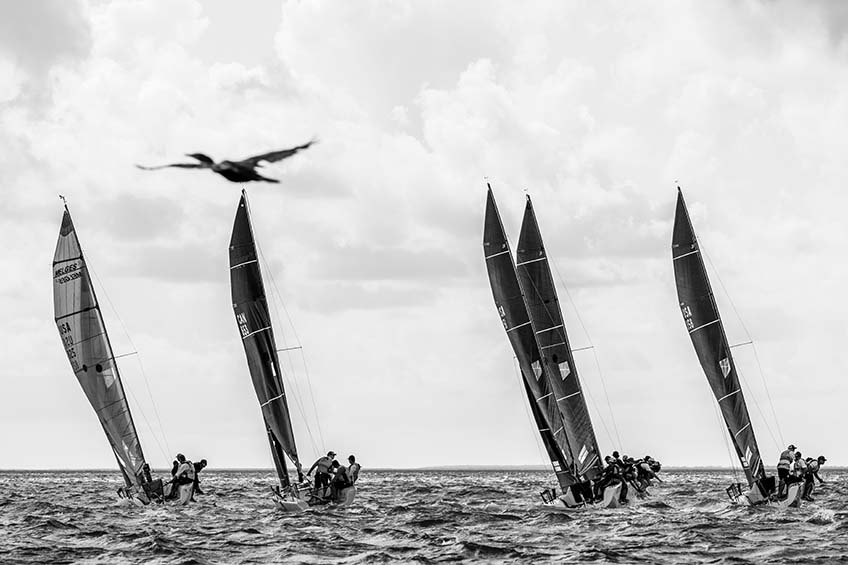"Why can't I point?" is a common refrain heard post race at bars and yacht clubs around the world, and it's a tricky question to answer. In our third installment of our four-part series, Quantum's Dave Flynn discusses medium/optimum air conditions.

There are many possible causes, often interrelated. It is a particularly vexing diagnosis for handicap sailors since fundamental differences between boats can make it an impossible task. Expecting a heavy, low power, limited draft design to be an upwind monster is just not being realistic. For one design sailors the problem can be more clearly defined and the finger pointed. In the immortal words of Pogo, “We have met the enemy and he is us.”
This is the sweet spot. Smooth water, full speed, full power. Somewhere between 10-16 knots. It doesn’t get any easier. If you can’t point now, you never will.
Trim Hard
In this condition it's hard to pull the sails in far enough. Headsails can be at their maximum “in” settings (just kissing the spreader for genoas, and pointed at the middle of the spreader for non-overlapping sails). The mainsheet can be trimmed so that the top tell tale is stalled most of the time. A general rule of thumb is that if the boat speed is constant and the target can be reached easily, trim harder. If the boat struggles to accelerate when the nose is pushed down, then you have overdone it. Help controlling heel can be done with small eases on the mainsheet or by letting the traveler down (the type of boat affects this choice but a little of both is probably best regardless).
Angle of Heel Rules
Telltales are vital in light air and the transition phase, but as you get into optimum/medium they start to be secondary indicators. All you really care about is a consistent angle of heel. In the puffs, feather (let the boat come up) to keep from heeling too far. In the lulls, “press” or bear off slightly to increase heel. Perfect heel angle varies with boat type. For most displacement monohulls it will be around 22 degrees, but you don’t need a number. Heel equals weather helm. You want a little helm (3-5 degrees). More than that and you have too much heel. Every puff is an opportunity to gain height. The boat is at full speed and the waves are slowing you down so you can coast up in the puff without killing speed. You have over done it if the speed crashes. Make sure you are steering from the weather side so you can see the puffs coming.
Hike You Fools
The harder the team hikes the faster you go. This is where the “sport” part of the program becomes real. Pain is directly proportional to height and speed. The headsail trimmer is more valuable hiking than trimming (not much to do anyway since the sail is all the way in). Don’t let concern about getting ready for the spinnaker set get you off the rail. This is particularly critical on your final approach to the weather mark where the natural tendency is to worry about your next job, as opposed to boat speed and actually getting to the mark.
Flat Sails and Tight Rig
Most sailboats (especially ones with high horsepower to weight ratios) transition from being underpowered to overpowered very quickly. If you are adjusting rig tension for conditions, this is the time to be aggressive about tightening things up. The straighter the headstay, the higher you point. Sails need to be fully “bladed” out. Maximum backstay and outhaul on the mainsail, plenty of jib halyard and lead back (or up) for headsails. Flatter sails can be trimmed harder without slowing the boat down.
----------
Read Part 1 focusing on pointing in light air, or read Part 2 about the transition phase between light and medium air.